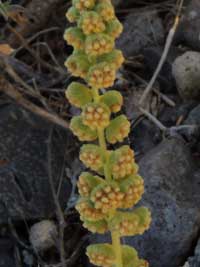Weak-leaf Bur Ragweed
Ambrosia confertiflora
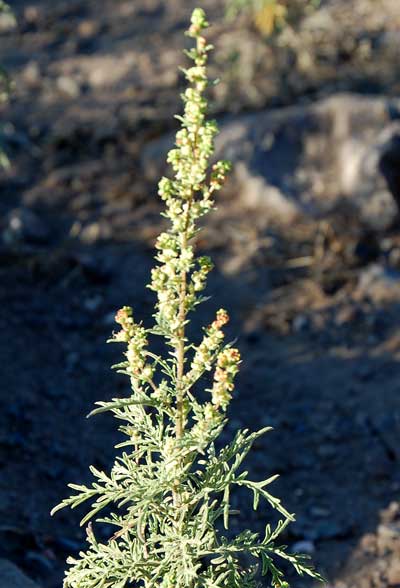
Photographed along Rackensack Wash near Camp Creek, Maricopa Co., Arizona, Oct 2009.
Brown ambrosia aphid colonies can sometimes be found on these plants, but generally only if ants are present to guard them. The aphids are then predated by Convergent Lady Birds.
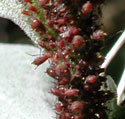
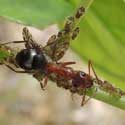
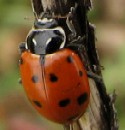
PERENNIAL HERB: Re-grows from underground rhizomes which spread out
thus forming colonies of this plant. Mostly less than ½ meter tall
LEAVES: Pale green leaves are twice, or more, pinnately dissected into narrow
segments.
RANGE: In the Sonoran Desert found in canyons, near riparian habitats, in mesquite
bosque openings, mostly at the higher elevations. Common also in high desert habitats such
as juniper woodlands, chaparral and grasslands. Widely distributed from California east
into south-central USA. This plant flourishes best in soils that have been disturbed by
human activities like off road vehicles, agriculture and heavy foot traffic.
FLOWERS: Flowering may occur in late spring and again in late summer and fall
depending on rainfall. The greenish flowers are not showy, but the copious pollen dispersed
by the wind is responsible for hay fever symptoms in many people. On the spikes female
flower heads are below the smaller exclusively male-flowered heads above. In the photo
below each male flower head holds about ten florets - the yellow color is the pollen ready
to be carried away by breezes.
FRUIT: The seeds are enclosed in a weak bur.
UNARMED. No thorns, burrs have weak barbs.
Asteraceae -- Sunflower Family
Sponsored Links:
